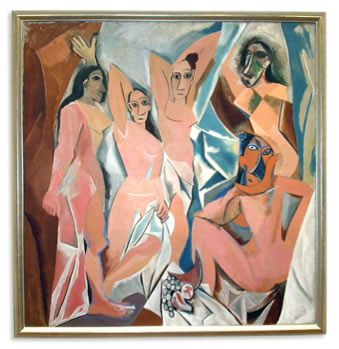Painting techniques
The most important painting invention of the 20th century was acrylic paint, commercially available since the 1950s. At first, water-based acrylic paints were sold as interior house paints. Soon after, artists (the first of whom were Mexican muralists) and companies alike began to explore the potential of the new binders. Water-soluble artist-quality acrylic paints became commercially available in the early 1960s.
The Palette
Among the pigments discovered in the 20th century, the most important is titanium white, a superb artist-quality pigment. Although the pigment was discovered in 1821, mass-production only began in the early 1920s.

Pablo Picasso (1881-1973), the Cubism palette Pablo Picasso, Les Demoiselles d'Avignon (1907), MoMa, New York Les Demoiselles d'Avignon (1907) is a pivotal work in the development of Modern Art. Described as the "core of Picasso’s laboratory" by the French writer and poet André Breton, the work jolted the imagination of Picasso’s contemporaries and generations of artists since. For this painting, Picasso used lead white, vermilion, cobalt blue, ochre, bone black, emerald green, and cadmium yellow. |

Andy Warhol (1928-1987), the acrylic age Andy Warhol, Portrait of Brooke Hayward, 1973, Tate Gallery, London Andy Warhol and other contemporary artists used many materials for their paintings. The colored (non-black) paint layers are made of acrylic emulsion paint. The black areas are made of an alkyd medium - an oil-resin binding medium commonly used in house paints and inks. The white priming layer was also identified as an alkyd medium. Warhol’s palette included: titanium white, cadmium yellow/orange, cobalt blue, viridian, Mars red, and carbon black. The pink and red pigments have been identified as synthetic quinacridone reds. |
